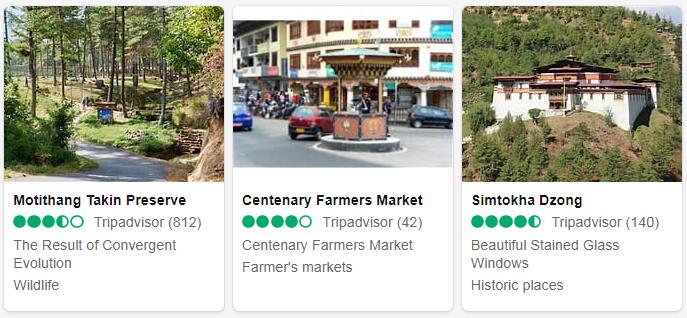Bhutan 2018
In 2018, Bhutan had a population of approximately 754,000 people. The economy is largely based on agriculture, forestry and tourism. Dzongkha is the official language although other languages such as Nepali and English are also spoken. According to extrareference, Bhutan is a constitutional monarchy with an executive branch headed by the King who is the head of state. The legislative branch consists of a bicameral parliament (the National Assembly). In terms of foreign relations, Bhutan maintains diplomatic ties with over 50 countries around the world and has close ties with its neighbors in South Asia such as India and Nepal. The government also works closely with international organizations such as the United Nations, World Bank, International Monetary Fund (IMF), World Trade Organization (WTO) and South Asian Association for Regional Cooperation (SAARC).
Yearbook 2018
Bhutan. According to Countryaah.com, Thimphu is the capital city of Bhutan, a country located in Southern Asia. Bhutan held its third election this year since the country in 2008 transitioned from absolute monarchy to a democratic system. The voters clearly signaled that they wanted change. In the first round of voting, voters cast their vote on one of the parties and in the second, the two largest parties’ various candidates are placed against each other in a majority election in one-man constituencies. This year, in the second round, the party met Solidarity, Justice, Freedom (DNT) and Bhutan Peace and Welfare Party (DPT), which received 32 and 31% of the votes in the first round respectively. This meant that the People’s Democratic Party (PDP), which in 2013 received 32 out of 47 seats in the National Assembly, was excluded from the second round of elections and thus became completely without representation in Parliament.
- According to Abbreviationfinder: RUB is an three letter acronym for Bhutan.
The winner of the election became DNT, which was awarded 30 seats. The party’s leader, the surgeon Lotay Tshering, thus became new prime minister. Gender equality in the country took a step forward as the number of female MPs increased from four to seven. Thus, out of a total of ten women who were candidates, 70% received the most votes in their constituency.
HISTORY
The Bhutan was explored in 1627 by two Portuguese Jesuits (E. Cacella and J. Cabral) who crossed it along the road between Cooch Behar (northern border of Bengal) and Shigatse in Tibet. Other explorations, mostly English, were carried out in the sec. 18th (in 1774 G. Bogle and A. Hamilton, in 1776 and 1777 again Hamilton; S. Turner in 1782) and 19th (T. Manning in 1810; RB Pemberton in 1838; HH Godwin-Austen in 1864). At the beginning of the 20th century. (C. White in 1905; FM Bailey in 1922) topographic surveys and geological observations were performed.
Until the 17th century. Bhutan did not have a precise political configuration. It was the Nagdban-rnamrgyal lama (1594-1651), giving the country an ecclesiastical organization, who ensured religious independence and political defense from repeated Tibetan military interventions. Subsequently, the figure of a lay regent was established to whom the effective government belonged. After a long period of anarchy, the situation returned to order with U-rgyan-dbaù-p‛yug who, in 1907, after the resignation of the last lama, proclaimed himself hereditary ruler. With the Friendship Treaty of 1949, the Indian Union was granted a non-binding supervisory power over foreign policy. Subsequently, the Bhutan tried to expand the sphere of its autonomy with respect to India, which however remained, also in economic terms, the main interlocutor of the country,
On the internal level, despite the absence of a written Constitution, the Bhutan slowly saw the consolidation of the role of the National Assembly, established in 1953. But the government policy aimed at the protection and strengthening of the Bhutanese national identity, privileging the related cultural traditions to the Buddhist religion, continued to affect relations with the large Nepalese and Hindu minority residing in the southern provinces and consequently to influence relations with Nepal. Since 1990 the areas on the border with Nepal were affected by demonstrations, promoted by the People’s Party of Bhutan, for the initiation of reforms that would guarantee the Nepalese minority a wider representation. The unrest was suppressed by King Jigme Singye Wangchuk, but continued in the following years, along with the exodus of thousands of residents from the southern regions to Nepal. Another cause of internal tension arose from the presence of separatist groups from the Indian state of Assam who took refuge in the southern regions; after the official protests in Assam, in 2003 there were serious armed clashes between the army of the Bhutan and the separatist forces.
The difficult march towards democracy, undertaken in 1998 with constitutional changes limiting the powers of the monarchy, while maintaining the veto on the activity of political parties, saw in 2005 a new draft Constitution that contemplated the birth of a parliamentary democracy. The sovereign announced that he would abdicate in favor of the crown prince in 2008, on the occasion of the first democratic elections, but the rotation took place in 2006, with the accession to the throne of Prince Jigme Khesar Namgyel Wangchuck.
The first elections in the history of the country, held in 2008, saw the success of the DPT (Druk Phuensum Tshogpa, Buthan Peace and Prosperity Party) which won 45 out of 47 seats, while the elections held in July 2013 won the party of opposition PDP (People’s Democratic Party), which obtained 32 seats against the 15 assigned to the opposing side. The elections held in October 2018 marked a further change in leadership of the country: the center-left party Druk Nyamrup Tshogpa (DNT) won the victory, favoring the strengthening of economic relations with India, which won 30 of the 47 seats in the National Assembly and whose leader L. Tshering received the office of premier, while the DTP obtained the remaining 17 seats.



